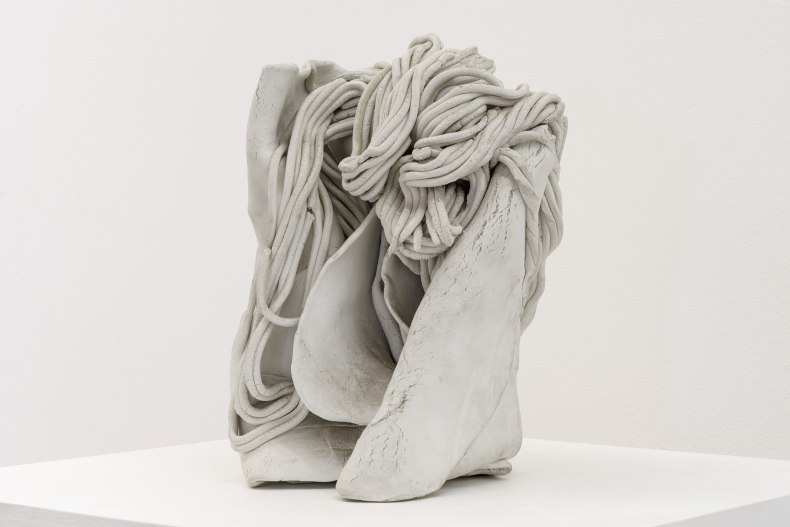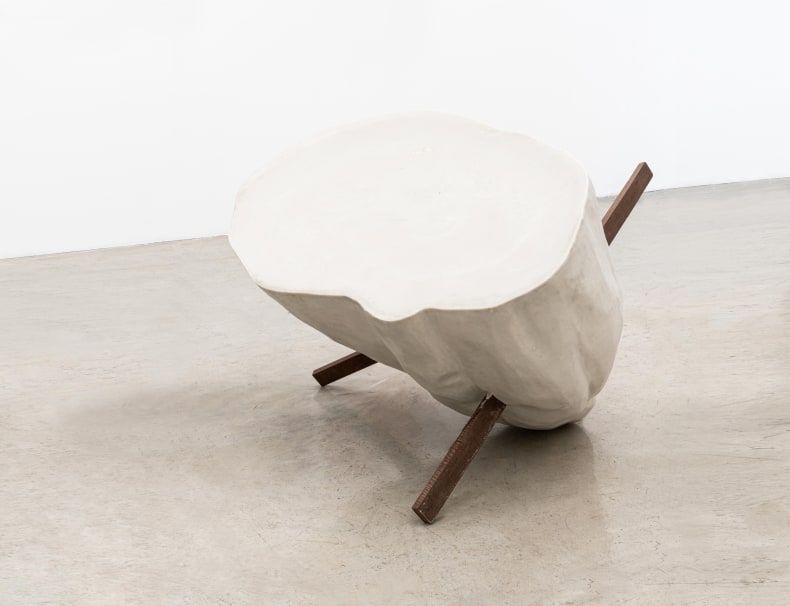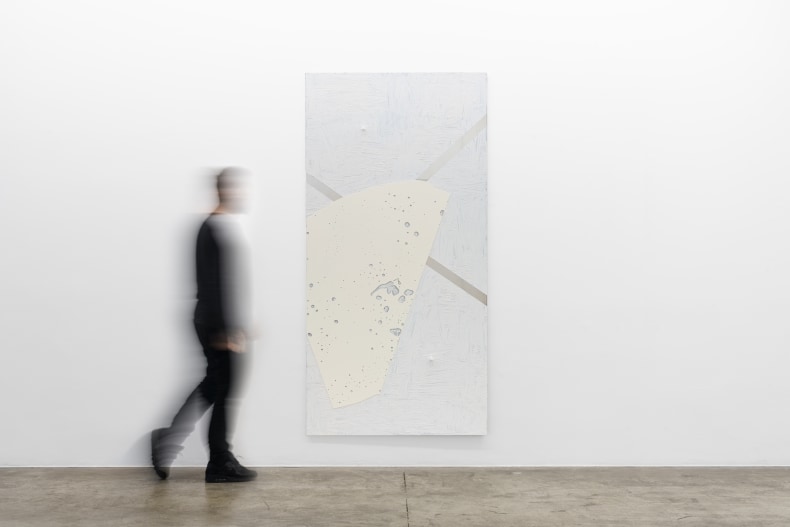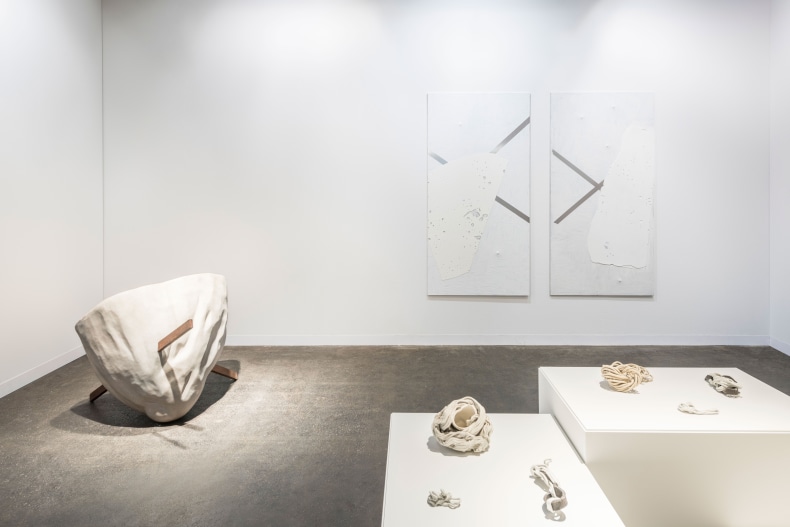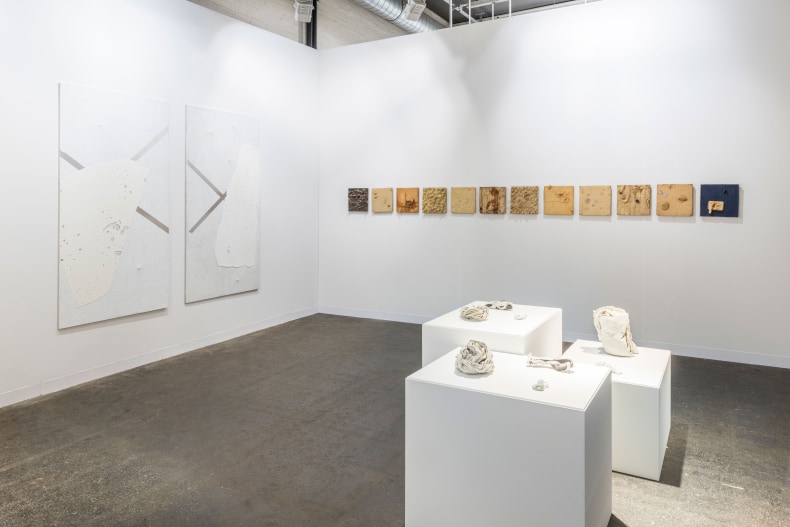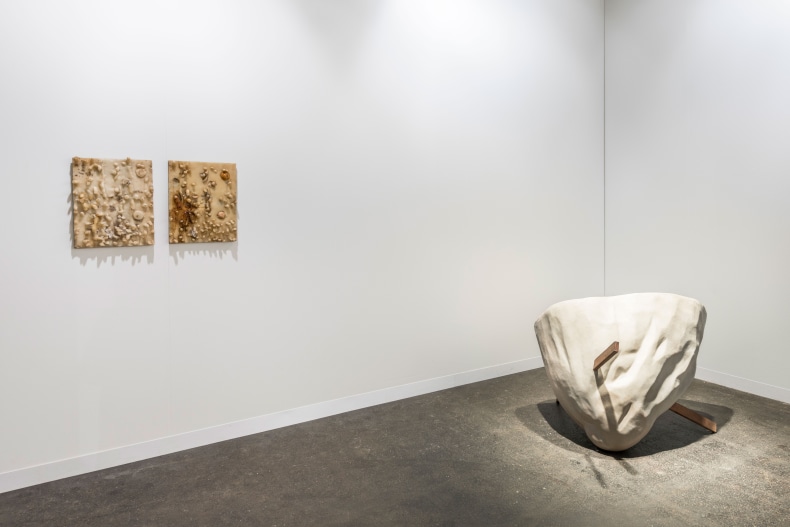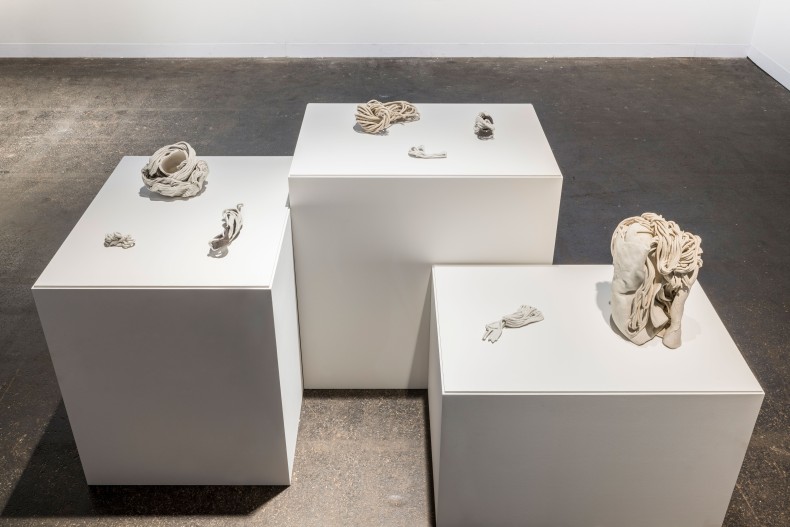Carlito Carvalhosa was one of the most inspired artists working in Brazil since the early 1980s. Initially a painter interested in the texture and body of painting, Carvalhosa fused mediums, constantly blurring conventional distinctions. Tackling the unaddressed potentialities of art typologies established by earlier Brazilian artists, such as the concepts of ‘Obra Mole’ (Soft Work), by Lygia Clark, ‘Bolide’ and ‘Parangolé’ (by Hélio Oiticica), Carvalhosa expanded them to monumental, site-specific, amplified dimensions pointing towards Gesamtkunstwerk (Total Work of Art). Such was the case of his sound/light/ambient installation titled Sum of Days, a collaboration with Phillip Glass presented at the Museum of Modern Art New York’s Atrium in 2011.
The presentation focuses on Carvalhosa’s continuous use of reflexive surfaces and opaque white materials—from wax to ceramic to plaster —in order to address an indexical repertoire where forms are always on the brink of the formless, faktura manifests as texture saturated by bodily imprints, and sculpture falls as a soft, convoluted, nameless architecture where notions of the inner and outer brilliantly conflate.

